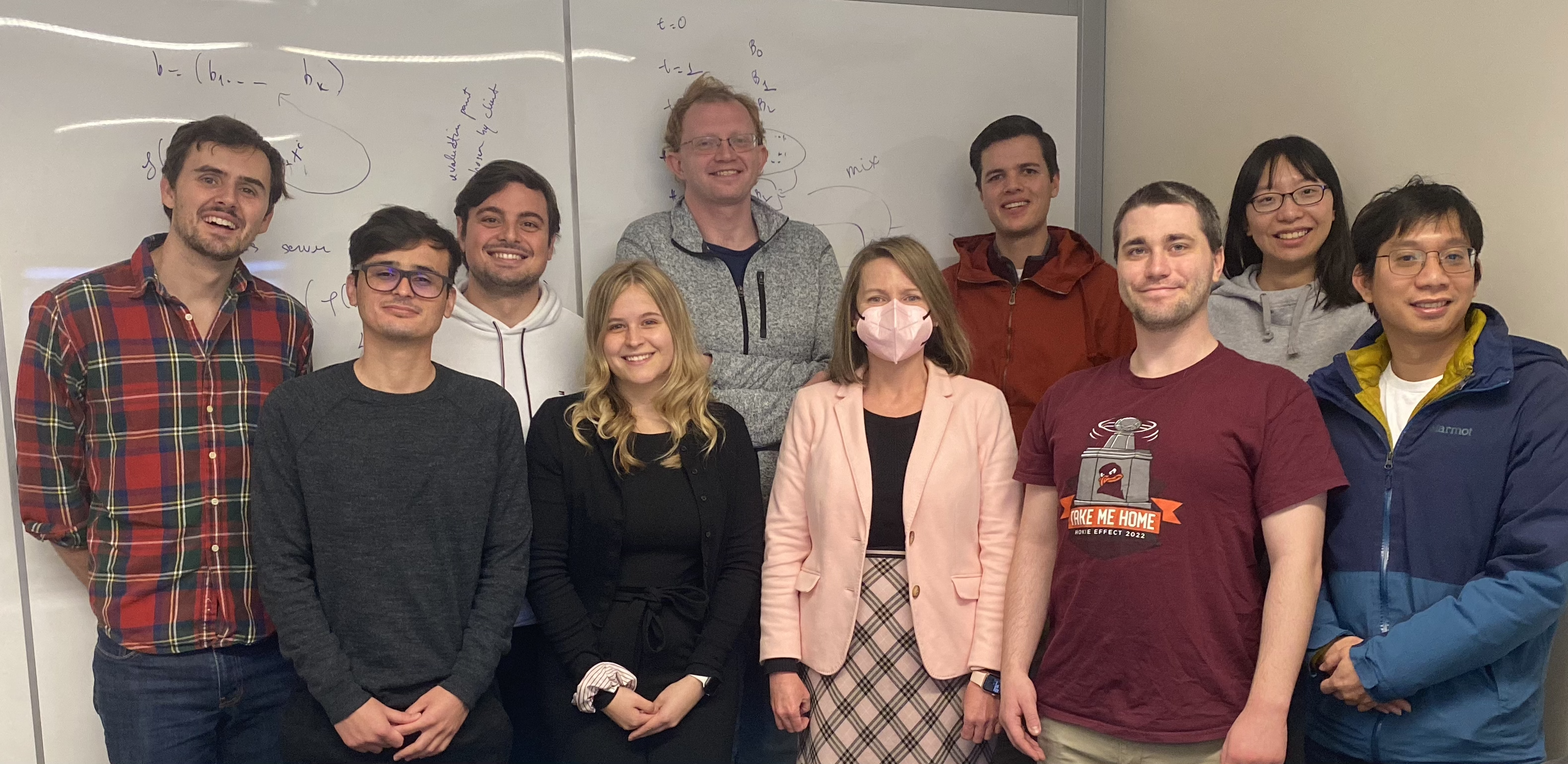

Our work on codes for with desirable properties for cryptographic applications
▪ produces affine Cartesian codes and Hermitian and Hermitian-like codes which are linearly complementary dual (joint work with Hiram Lopez and Felice Manganiello)
▪ develops twisted Hermitian codes which have high dimensional Schur squares (joint work with Rutuja Kshirsagar and the 2018 pREU students, who are shown below: Austin Allen, Carnegie Mellon University; Keller Blackwell, University of South Florida; Olivia Fiol, Vassar College; Bethany Matsick, Liberty University; and Zoe Nelson, Oglethorpe University)

Our work on codes for distributed storage systems
▪ utilizes fiber products (joint work with Katie Haymaker and Beth Malmskog) to construct codes with local recovery and high availability
▪ demonstrates the use of 3-regular graphs for distributed storage (joint work with Shuhong Gao, Fiona Knoll, and Felice Manganiello)
Our work on algebraic geometry codes
▪ demonstrates that multipoint codes may better error-correcting capabilities and increased efficiency than comparable one-point codes, indicating that the study of algebraic geometry codes not be restricted to the one-point case.
▪ provides a minimum distance decoding algorithm for multipoint codes
▪ illustrates how Riemann-Roch spaces of nonrational places may be utilized in code constructions; in some instances, this leads to codes with double the error-correcting capability of comparable one-point Hermitian codes.
▪ yields some best-known codes that are included in Brouwer's tables
Our work on analysis of parity-check codes
▪ proves that the generating function of the pseudocodewords of a binary parity-check code is a rational function (a fact proven concurrently and independently by W.-C.W. Li, M. Lu, and C. Wang). provides algorithms for producing this generating function.
▪ produces short rational functions that generate the irreducible pseudocodewords of binary and ternary parity-check codes, allowing one to study the impact of parity-check matrix choice in code representation.
▪ provides algorithms for producing this generating function.
Our work on structures related to algebraic geometry codes
▪ yields explicit bases for Riemann-Roch spaces of large families of function fields defined by linearized polynomials (including Hermitian and extended norm-trace function fields); these bases may be applied to the construction of small-bias sets and low-discrepancy sequences.
▪ develops and provides computational tools for producing the minimal generating set of a Weierstrass semigroup of a m-tuple of places of an algebraic function field.
